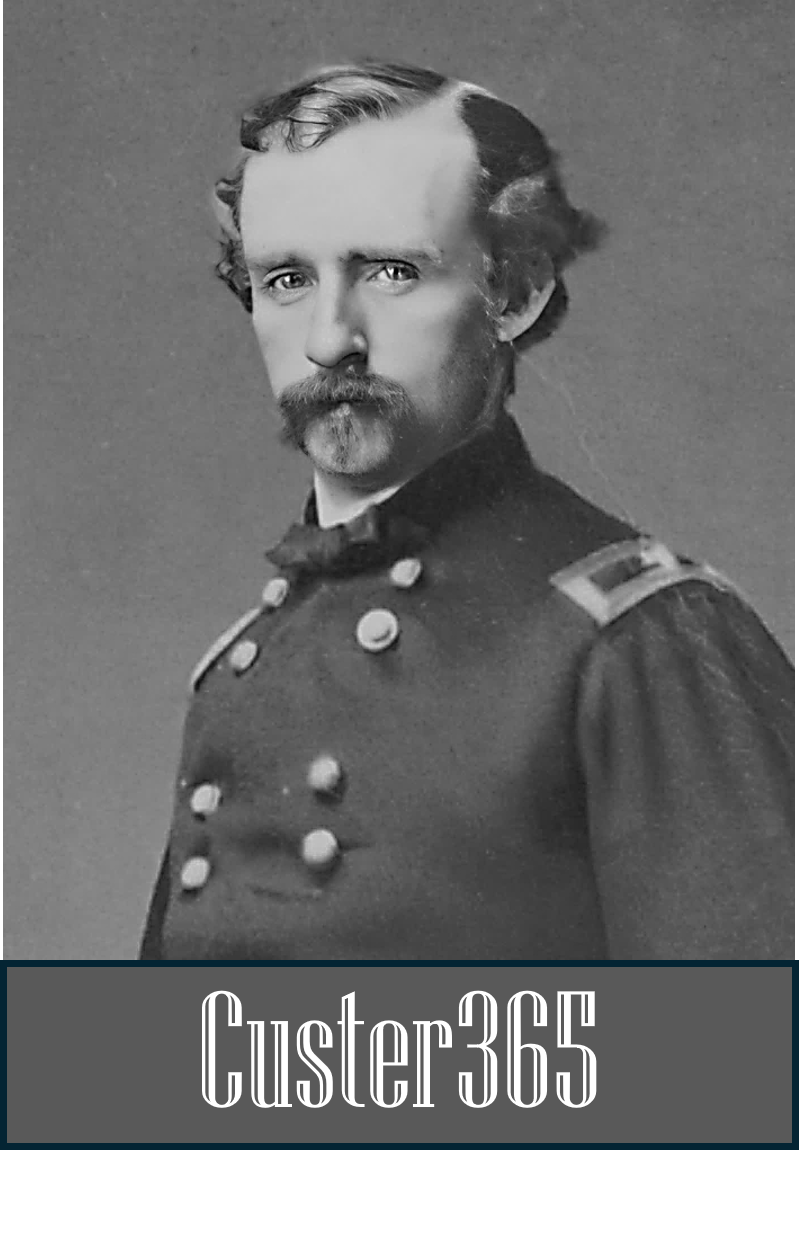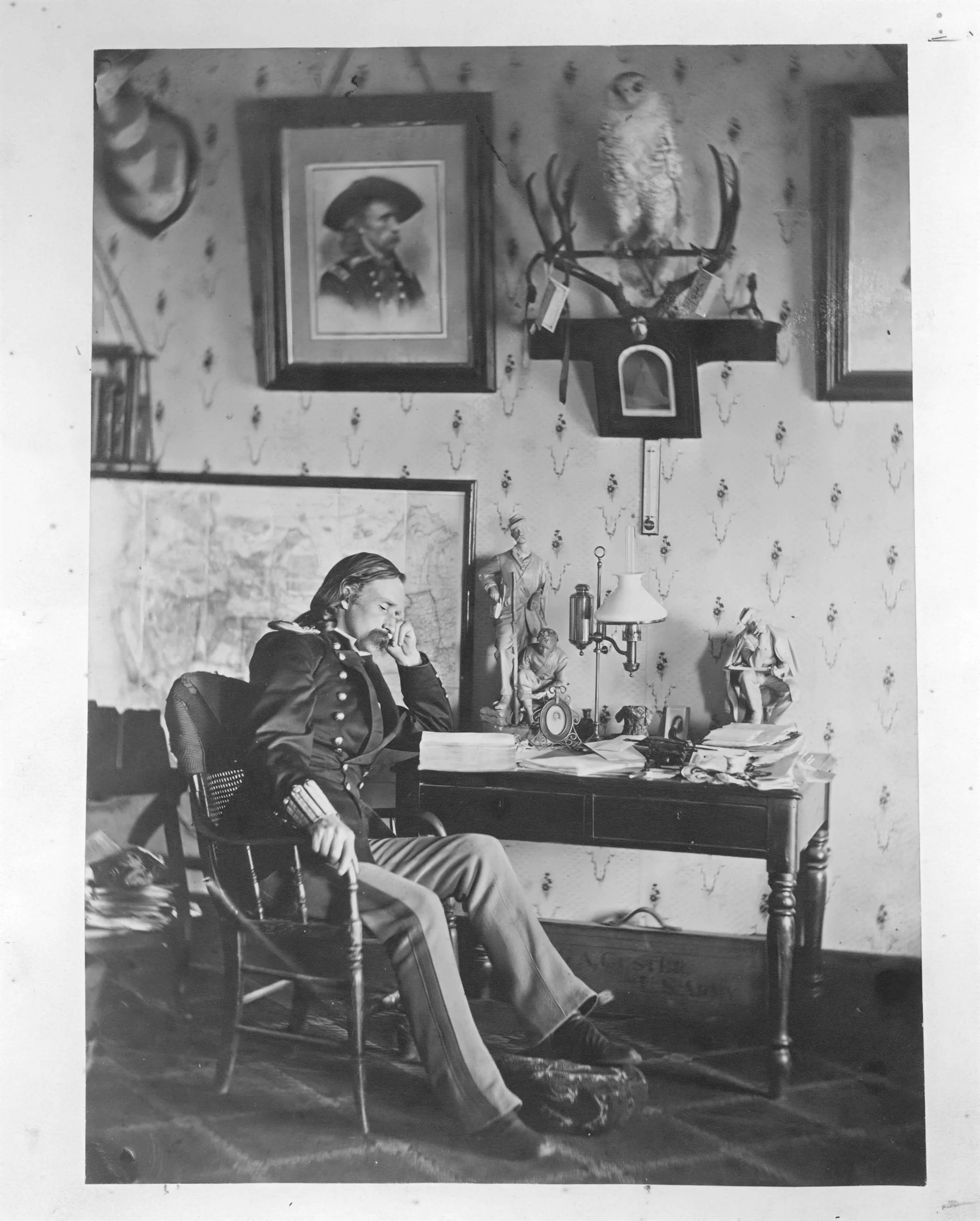JULY 23: Joining the 7th
Lt. Colonel George Armstrong Custer in his study at Fort Lincoln, Dakota Territory. (Credit: National Park Service)
On July 23, 1866, George Armstrong Custer, who had achieved the rank of Major General during the Civil War, was commissioned as a Lieutenant Colonel in the newly formed 7th U.S. Cavalry Regiment. He was assigned command of the regiment and posted to Fort Riley, Kansas, where he spent the winter of 1866-1867 preparing his troops for the impending Indian Wars.
During the Civil War, commissioned officers received honorary promotions in the field for gallantry or meritorious service. They often did not, however, come with increased authority or a bump in pay. For example, Custer received two brevet promotions:
a) To Brigadier General of Volunteers at the age of 23 on June 29, 1863; and
b) To Major General in the Regular Army on March 13, 1865. It came after significant contributions during the Shenandoah Valley Campaign, particularly his role in the Union victory at the Battle of Cedar Creek in northern Virginia.
According to LearnCivilWarHistory.com, Union Armies, the largest field force unit of a military organization, were commanded by a major general. A Corps was commanded by a brigadier general or a major general. A Division was commanded by a brigadier general or a major general. Brigades were led by a brigadier general or a senior colonel. And Regiments were commanded by colonels.
Many officers held two ranks, a permanent rank in the regular U.S. Army and a higher rank in the U.S. Volunteers, which made up the bulk of Union forces during the Civil War.
Following the end of the Civil War, Custer, like many Union officers, returned to the rank they held in the regular army.


